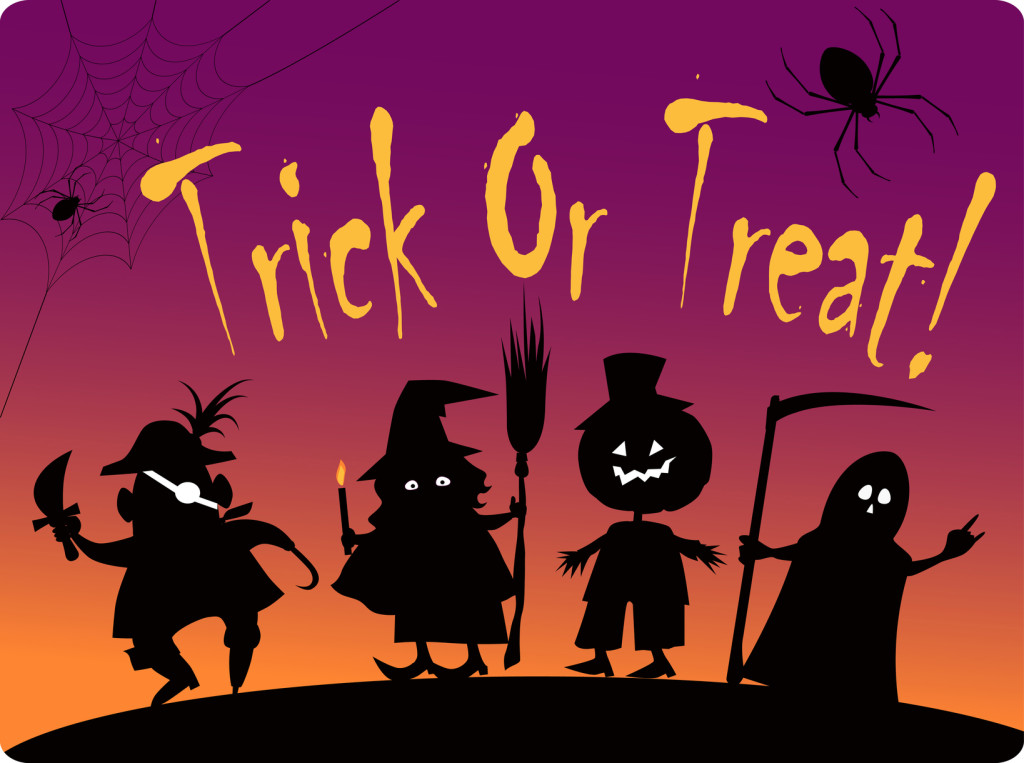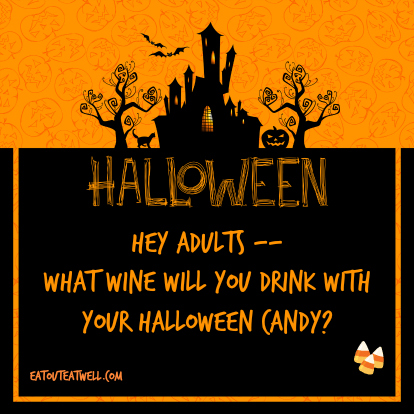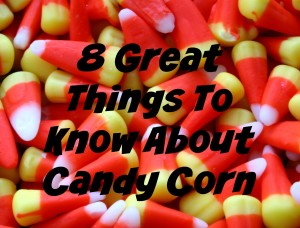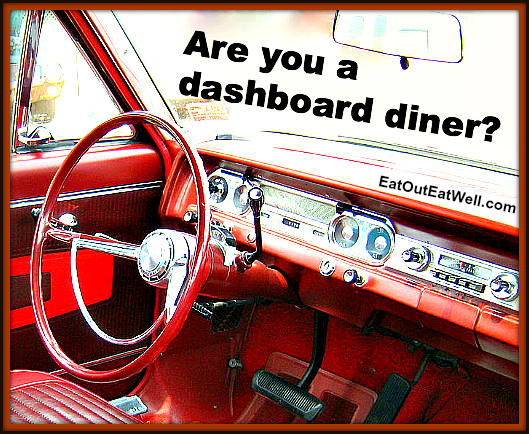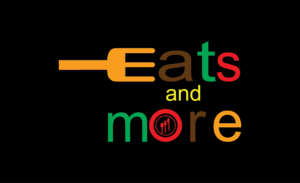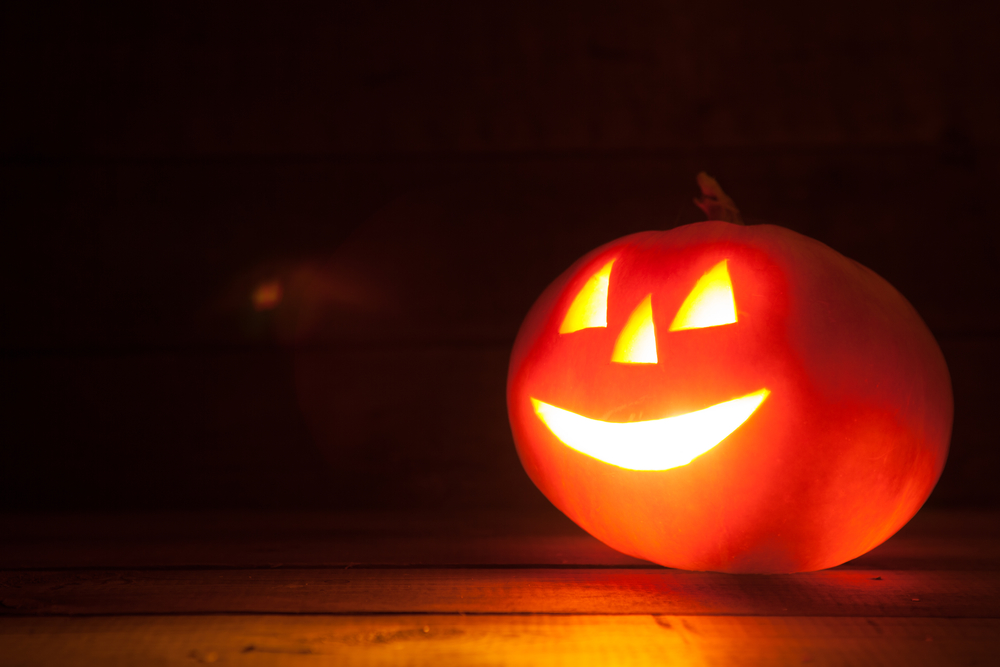
A Spooky Jack-o’-Lantern Tale
Have you ever wondered where the Jack-O’-Lantern comes from?
According to an Irish legend that goes back hundreds of years, a miserable old drunk named Stingy Jack — who liked to play tricks on his family, friends, and even the Devil — tricked the Devil into climbing up an apple tree. Stingy Jack put crosses around the apple tree’s trunk so the Devil couldn’t get down and told the Devil that if he wouldn’t take his soul when he died, Stingy Jack would remove the crosses and let the Devil down.
When Jack died, Saint Peter, at the pearly gates of Heaven, told him that he couldn’t enter Heaven because he was mean, cruel, and had led a miserable and worthless life. Stingy Jack then went down to Hell but the Devil wouldn’t take him in. Ultimate payback! With nowhere to go Jack had to wander around in the darkness between Heaven and Hell.
Stingy Jack, Jack-O’-Lanterns, And Halloween
Halloween, celebrated on October 31, originated with the ancient Celtic festival of Samhain, when people would light bonfires and wear costumes to ward off ghosts. In Pope Gregory III, in the eighth century, designated November 1 as a day to honor all saints and soon All Saints Day incorporated some of the traditions of Samhain, with the evening before known as All Hallows Eve, later called Halloween. Halloween eventually evolved into a day filled with activities like trick-or-treating and carving jack-o-lanterns.
On All Hallows’ Eve the Irish made Jack-o’-lanterns by hollowing out turnips, rutabagas, gourds, potatoes, and beets and then putting lights in them to keep away both the evil spirits and Stingy Jack. In the 1800′s when Irish immigrants came to America, they discovered that pumpkins were bigger and easier to carve and the pumpkin became the Jack-O’-Lantern.
Trick Or Treating
Trick or treating is a relatively recent American activity. Costumes, doorbell-ringing, and the expectation of hand-outs started in different locations throughout the country in the late 1930s and early 1940s. When costumed kids rang doorbells in the late 40’s and early 50’s, they were likely to get coins, nuts, fruit, cookies, cakes, and toys as well as candy. It took a while for candy to become synonymous with Halloween – no doubt, with the full backing of candy producers.
Some Humorous (Maybe Scary) Info: If You Eat The Candy That Fills Those Jack-O’-Lanterns, How Far Do You Have To Walk To Work It Off?
Here’s another way to think about Halloween candy — how much walking will it take to work off the candy calories?
According to walking.com:
- 1 Fun Size candy bar (Snickers, Milky Way, Butterfingers, etc. is about 80 calories. You’d need to walk 0.8 miles, 1.29 kilometers, or 1600 steps, assuming you cover one mile in 2,000 steps.
- 2 Hershey’s Kisses are about 50 calories. You’d need to walk 0.5 miles, 0.80 kilometers, or 1000 steps, assuming you cover one mile in 2,000 steps.
- 2 Brachs caramels are about 80 calories. You’d need to walk 0.8 miles, 1.29 kilometers, or 1600 steps, assuming you cover one mile in 2,000 steps.
- 1 mini bite-size candy bar (Snickers, Milky Way, Butterfingers, etc.) is about 55 calories. You’d need to walk 0.55 miles, 0.88 kilometers, or 1100 steps, assuming you cover one mile in 2,000 steps.
- 1 Fun Size M&M packet – Plain or Peanut, is 90 calories. You’d need to walk 0.9 miles, 1.45 kilometers, or 1800 steps, assuming you cover one mile in 2,000 steps.
- 1 mini Reese’s Peanut Butter Cup is 33 calories. You’d need to walk 0.33 miles, 0.53 kilometers, or 660 steps, assuming you cover one mile in 2,000 steps.
- 1 full size chocolate candy bar (Snickers, Hershey, etc.) is about 275 calories. You’d need to walk 2.75 miles, 4.43 kilometers, or 5500 steps, assuming you cover one mile in 2,000 steps.
- 1 King Size chocolate candy bar (Snickers, Hershey, etc.) is about 500 calories. You’d need to walk 5 miles, 8.06 kilometers, or 10000 steps, assuming you cover one mile in 2,000 steps.
- 1 small Tootsie Roll is 25 calories. You’d need to walk 0.25 miles, 0.40 kilometers, or 500 steps, assuming you cover one mile in 2,000 steps.
If You Ate . . .
2 Brachs caramels, 2 Hershey’s Kisses, 1 small Tootsie Roll, 1 Fun Size candy bar (Snickers, Milky Way, Butterfingers, etc.) 1 mini bite-size candy bar (Snickers, Milky Way, Butterfingers, etc.), 1 Fun Size M&M packet – Plain or Peanut, 1 mini Reese’s Peanut Butter Cup, 1 full size chocolate candy bar (Snickers, Hershey, etc.), 1 King Size chocolate candy bar (Snickers, Hershey, etc.)… the grand total is 1188 calories. You’d need to walk 11.88 miles, 19.16 kilometers, or 23,760 steps, assuming you cover one mile in 2,000 steps.
Happy Halloween!
